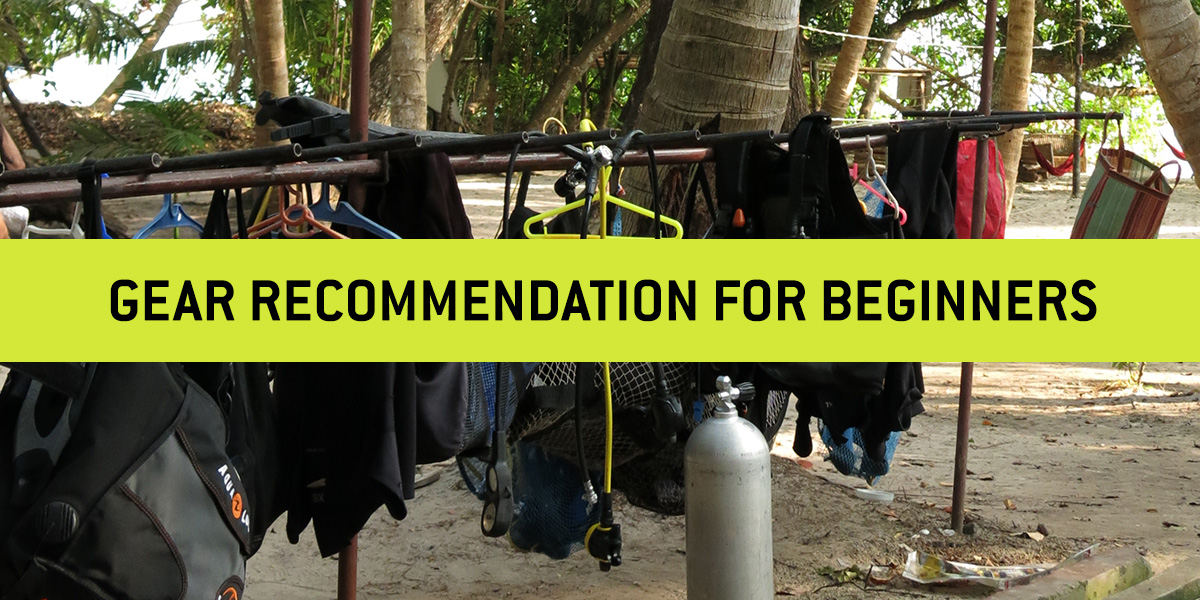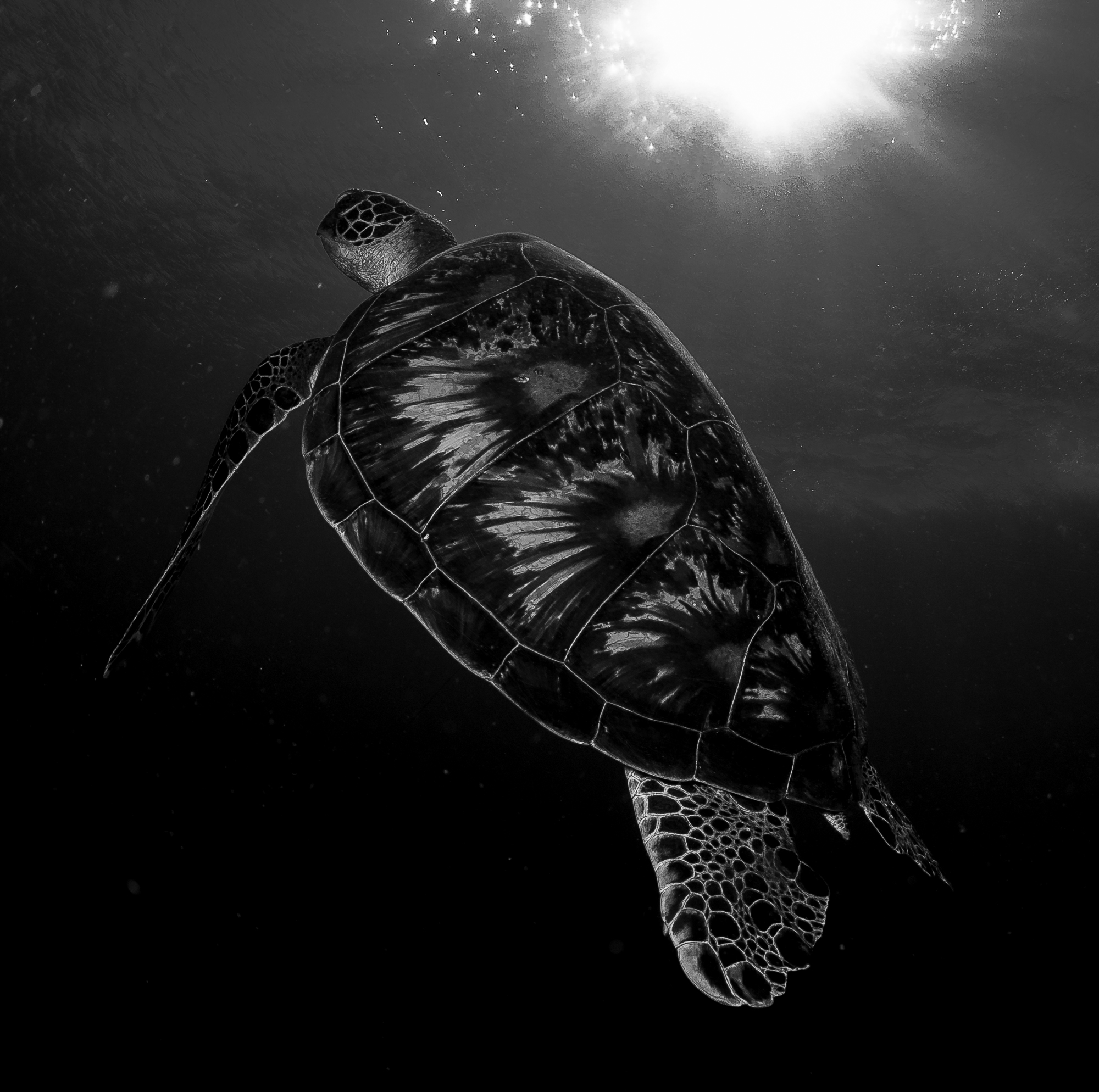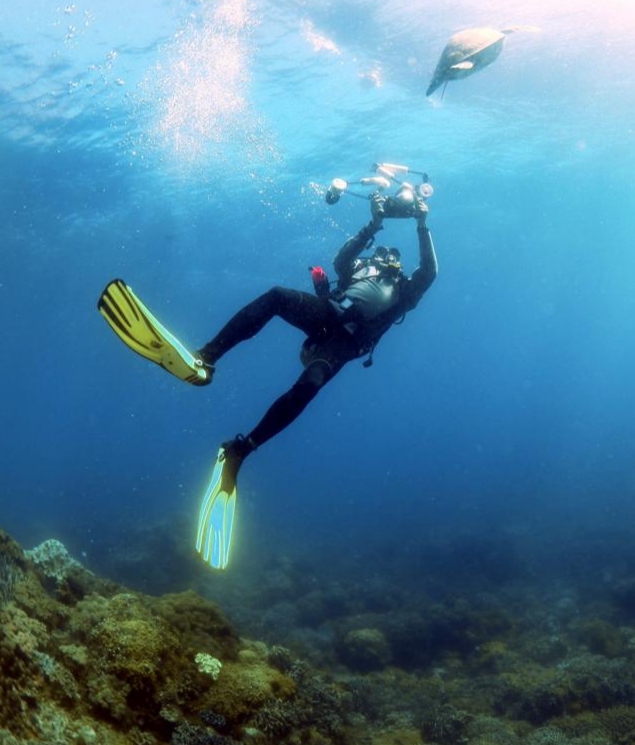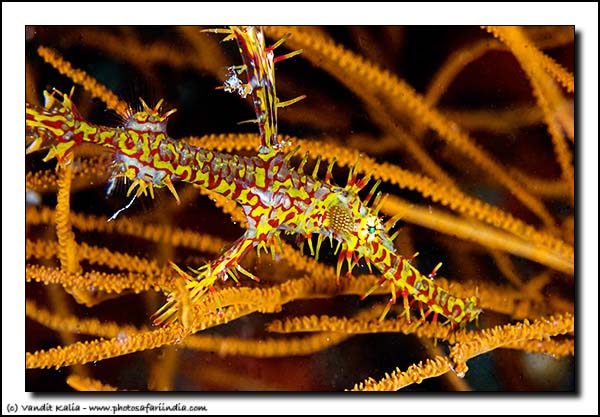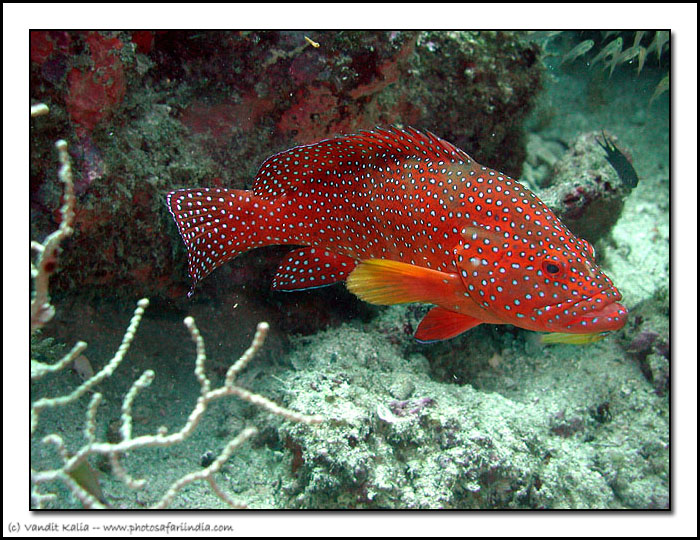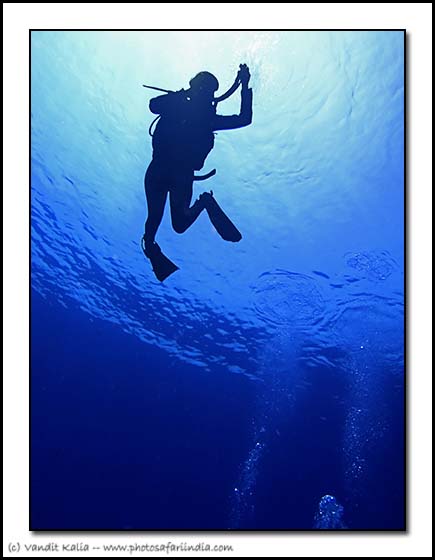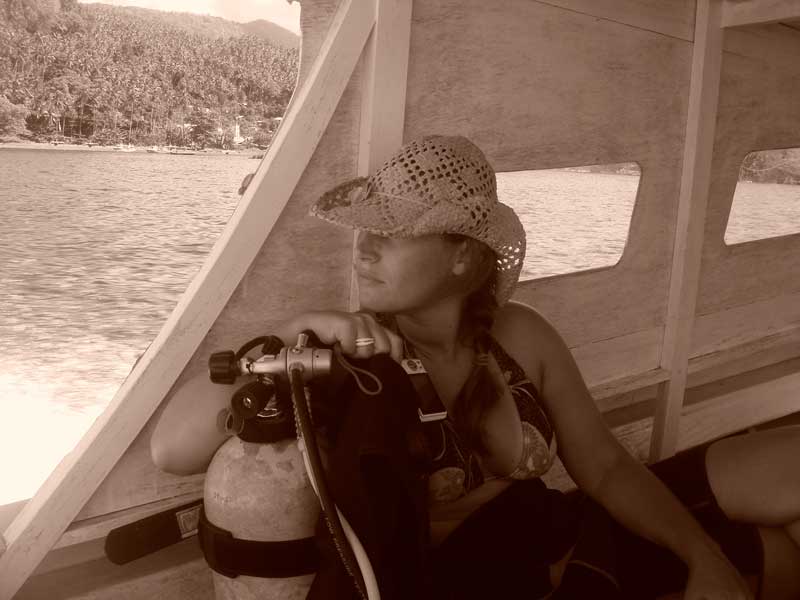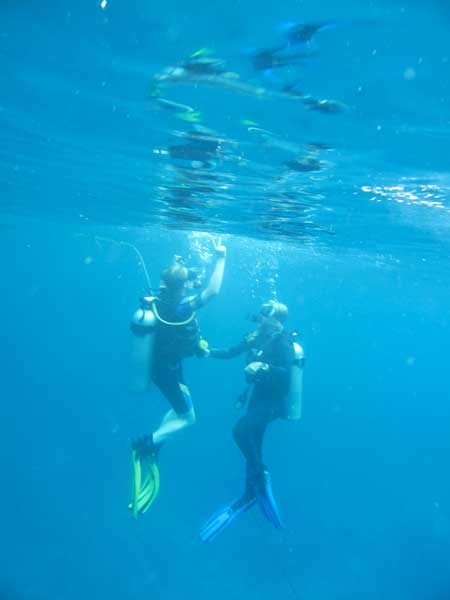There is a common – and prevalent – belief that beginners need to buy a lot of equipment right away. Pretty much everything is touted as “essential for survival”, and so divers are urged to have their own gear so that they don’t have to rely on questionable rental equipment.
Another oft-cited statistic used to justify hard-selling equipment is that divers that own scuba kit are more likely to dive than divers that don’t. To me, this is a very silly stat which confuses cause and effect – is it owning gear that makes people more likely to dive, or could it be that the people that purchase gear are the keener divers, who will be diving more anyway?
Preying upon the insecurities and fears of new divers or relying on misleading stats may help the dive shop sell gear, but is it necessarily the best thing for the diver? I humbly suggest to you that buying all your gear upfront is NOT the right thing for beginners to do.
Don’t get me wrong – I am all in favor of divers owning their own equipment. The benefits of this are manyfold – you get gear that has more features than rental equipment, you can configure it exactly the way you want, it will fit you properly and most importantly, you can really fine tune your weighting and trim with your own gear. A keen reader will notice safety is nowhere in this list… and with good reason: having dived almost all over the world, I have yet to encounter a professional dive center with unsafe gear.
What to buy first?
If you can afford your own kit at once, by all means go for it. It is nice to have everything at once, and you can probably get a better deal this way as well, as opposed to buying piece-meal. However, what do you do if budget is tight and you cannot buy everything?
The traditional recommendation is to buy your own regulator, as it is “life support” equipment. I disagree. I have yet to see any dive center anywhere in the world whose regulators are “unsafe.” In fact, rental gears in most places are probably better maintained than a lot of personal regs. Also, remember that the biggest cause of reg failures is not lack of servicing, but manufacturing flaws in the gaskets, O-rings, etc. These usually come in defective batches, and a dive centre using lots of regs daily is far more likely to isolate and resolve this than personal regs, which probably do not get used more than 50-60 times a year. And besides, if you cannot trust the regs of the dive centre you are diving with, you probably shouldn’t be diving with them in the first place.
My personal recommendation is as follows:
Start by buying a set of mask, fins & snorkel. These are personal items where fit is essential, and it is always good to have your own. I recently got back from a dive holiday where I was using rental fins (I couldn’t locate the pair I wanted, and so had to rent) – while they got me from point A to point B, they were too soft for my legs, and didn’t provide me the thrust that I was used to from my longer, stiffer fins. I was always aware of them, and they intruded a little into my enjoyment of the dive.
If you plan to dive in cold or temperate waters, start by getting your own thermal protection suit. If you dive tropical locations, you can get by with rentals, in which case move on to the next item on this list. However, for colder water, a wetsuit or drysuit that has been carefully selected for fit and thickness can make the difference between years of enjoyment of the sport or quitting it entirely. Another reason to get your own wetsuit is so that you can learn the buoyancy characteristics of that suit and how many kilos/pounds of weight you’ll need with it. Suits vary greatly in their buoyancy, depending not only on their thickness, but also the type of neoprene used. Your own suit makes it easy for you to fine-tune your weighting to the bare minimum. And as an added bonus – you only have your own pee in it!
After you get a thermal protection suit – or if you dive tropical waters only and so are ok with rental suits – the next step is to get your own dive computer first, especially if you plan to do reef diving. If you plan to dive wrecks, you can get by jes’ fine with using dive tables, but for reef diving, dive tables are clunky to use and pointlessly limit your dive – not only do they limit your bottom time, but they also limit your flexibility during the dive. This recommendation is sure to draw gasps of horror from experts on many Internet forums, so rather than digress here, please read my article on Tables or Computers for my thoughts on this subject. Getting back to the subject – a dive computer lets you get the most flexibility out of your dive, and at the same time gives you all the information you need in order to truly be in control of your own dive.
A lot of people are content letting themselves be led around by the DM. This is may be safe enough in practice, but as a diver, you re responsible for your own safety. Delegating this to the divemaster is an abrogation of your duty and responsibility as a diver. Having a computer puts the responsibility for your safety back where it belongs: with you. I cannot stress enough how important this is.
The next item would be to get your own BCD. Why? Because BCDs vary greatly in their fit, comfort and stability underwater. And these are very personal preferences. For example, thousands of divers swear by Buddy BCDs – I cannot hover horizontally on them if my life depended on it. The additional features of personal BCDs are nice to have as well – for example, trim pockets, which let you redistribute your weight more evenly (few rental BCDs have this feature) or personalized attachment points for your octo, SPG, knife, etc. Lastly, with your own BCD, you get familiar with the rate of inflation and deflation, and so it becomes easier to adjust your buoyancy underwater.
A regulator would, in my opinion, be the last item to get.
What to look for in scuba gear
Masks: Quite simple and obvious: fit. You want a mask that doesn’t let in water. And you want one that is comfortable for the entire dive – even if the mask doesn’t leak, it can vary significantly in comfort, especially around the nose pocket. The last benefit of your own mask is that you can make sure it doesn’t fog, by using toothpaste and/or burning the inner surface of the glass with a lighter. And when you get a mask – make sure you also get a neoprene strap to replace the rubber strab that comes with it.
Lastly, remember that the most expensive mask is not necessarily the best. The mask I have used for my last 600 dives cost me $12. The mask I stopped using after 5 dives cost me $80.
Fins: Fins don’t get the attention they deserve, which is surprising, as few things can ruin your dive as much as fins that don’t match your leg strength, kicking style and dive conditions. Some fins are designed for people with strong legs – they require a lot of strength to kick, but give you a lot of power. Other fins are designed for people with less well-developed swimming legs – they are softer but give you less thrust. Nowadays, there are a lot of expensive split-fins, which claim to reduce effort without compromising on thrust… but there, the trade-off is price. People who use the flutter kick would be better off with different fins than people who use the frog kick. Ideally, what you want to do is try out a range of fins at your dive centre or borrow some from your friends, till you find something that matches your legs/kicking style.
Do not spend a lot of money on fins unless you know you’ve found a set that works for you. Rent or buy a pair of cheapies in the interim, if need be.
Computer: Virtually all computers do the job from a safety point of view. Size, user-replaceable batteries, Nitrox capabilities & air integration are some of the features to look for. If you are on a budget, a basic Aladin or Suunto Mosquito does the job, and does it very well. I like wrist-mounted watch-style computers as I wear it when I go traveling, and am less likely to forget it. Others prefer bigger computers for ease of viewing the screen. Yet others prefer computers that are attached to their regulator console – one less thing to strap on while getting ready for a dive. The good news is, there really is no bad computer in the market today.
BCD: This is where it starts getting personal. Literally. There are three things you need to take into account with BCD. The first one is lift – ie, does it have enough buoyancy to support you during the dive. For tropical water diving, ie, with a 3mm suit, this is a non-issue. But if you plan to dive with double steel tanks and a 7mm two-piece wetsuit in cold water, you better look into the lift capacity in more detail. At the start of the dive, those tanks will be quite a few kilos heavy. And as you descend, your wetsuit will compress and you will become even more negatively buoyant. It is possible to be as heavy as 10-12kg negative at depth at the start of some dives. Can your BCD support that? After lift, the next feature to consider is features: are the pockets easily accessible, do you need weight integration, does your BCD have trim pockets (essential,
in my opinion),
etc. The third item is personal fit. Some people like back-inflating BCDs, some like the classic stabilizing jackets where the air moves about everywhere and some like the back-and-side pockets of modern BCDs. If possible, try before you buy. Only in the water will you know if a BCD rides up on how, or if the pockets are really accessible or no.
Btw, one hot new thing in the recreational diving community these days are backplates and wings – basically, tech-diving gear being used by recreational divers. However, you can get all the benefits of BP/wings even with traditional BCDs – the main features to look for are a back-inflation bladder and a crotch-strap to keep the tank from riding up. This way, you also get the benefits of quick-releases (let’s face it, if you aren’t going to be putting twin-100s and 2 stage bottles on your harness, a QR is actually quite a nice feature to have) and pockets for keeping slates, safety sausages, etc. Of course, you lose the whole “bad boy techie” glam, so not everything in life is free. And before the inevitable “try it first” emails come in, I should point out that I dive in BP/wings myself, and have been doing so from the days when DIR was an MS-DOS command, not a dive cult. I even teach OW in them. But I think for a lot of recreational divers, something like the Dive Rite Transpac is probably a better bet than full-on BP/wings.
Regulator: I am going to get a lot of hate mail on this, but I have a simple theory regarding regs and recreational diving -it doesn’t matter a whole lot what you get. Balanced, unbalanced, piston, diaphragm, breathing resistance and what have you… you can spend months and months analyzing the minute details of these various features. Yes, one reg may be marginally easier to breathe at 40m than another. Yes, in some sort of an extreme lab-created situation, you might be able to over-breathe a reg (although if that situation were to happen in real life, you’d have a lot more pressing problems than you reg). In practice, even a good entry-level reg ill give you decades of service.
Design and innate reliability of one brand or another are not an issue either for most typical regs. I have taken apart and serviced Oceanic, Apeks, Beuchat, Scubapro and Aqualung regs. The basic concept of a reg is pretty much the same for a given design family (piston/diaphragm, balanced/unbalanced). So it isn’t as if that is a huge concern. Note, however, that I did a “most typical regs.” There are a few brands which are exceptions to this rule, but those are the “exotics.”
One area where there is a difference is in maintenance requirements – some regs are more finicky and need to have their IP adjusted and washers, etc. changed regularly or they develop leaks. Others just work and work and work, regardless.
If you do cold-water diving, things are different. You will need a higher-quality, environmentally-sealed reg. And in this case, there are differences between brands, so do your research before you buy.
Summary
The above consists is my personal recommendation on what gear to get, when & how to go about the process of selecting gear. However, one question I get asked a lot is what specific brand or model to get. There really is not single “best” choice out there. However, some quick recommendations based on my experience:
Mask – no recommendations can be made, as it is too personal a choice
Fins – Cressi Frog series for frog-kickers; Mares Quattros for general all-purpose use; Atomic Split Fins for people with weaker legs or requiring a lot of speed, especially in calmer waters
BCD – Anything by Seaquest. Excellent BCDs. The Waves are hardy, budget BCDs which will give you YEARS of service (we use them at our dive centre and a more trouble-free and comfy BCD I have yet to encounter). They don’t have trim pockets, but you can buy trim belts to attach to a tank anyway. At the higher end, the Pro/Pro QD/Black Diamonds are all excellent BCDs.
Regulators – Apeks. There is no reason to look for anything else. My own regs are about 8+ years old and were last serviced in 2003. I’ve taken them to 94m, taken them ice-diving and done over a thousand dives on them. All they ask from me is a quick rinse after a dive. Now that’s love!
Computers – Aladin/Uwatecs or Suunto. It is like the great “Landrover or Landcruiser” or “Canon or Nikon” debates. You really don’t wanna ask. Just go to a store, look at them, and see what you want. Suuntos have a nicer form factor (you can wear them as a watch) and you don’t have to suffer that hideous monstrosity of an interface that the Aladin/Uwatecs do. On the other hand, Suuntos are a bit too conservative – almost ridiculously so – especially the newer ones. It is sort of like diving with your mom telling you to be careful, put your hat on, wear your scarf. The Aladins have a more realistic algorithm (which is perfectly safe, I might add). Ultimately, both are quality devices where is really counts – keeping you from getting bent.
The above brands are good, and you cannot go wrong buying them. However, that is not to say that these are the “best” or that other brands aren’t as good. There probably are a lot of other fins, BCDs, etc. that are just as good as the ones I mention above… and some may even be cheaper.
The good thing about scuba is that there is a plethora of opinions out there. I can bet you a lot of divers – including those with a lot more experience than me – feel differently and would suggest that you go the traditional “get your own reg first” route. Others, no doubt, would be horrified by my blasphemy about “all regs being more or less equal in the water for recreational diving.”
But these are my opinions and are not biased by anything – we don’t sell equipment nor do I get any commissions from any of the brands I recommend above (although if they feel like sending me some goodies, they are welcome to do so!). So you decide how much credence you want to give it.

